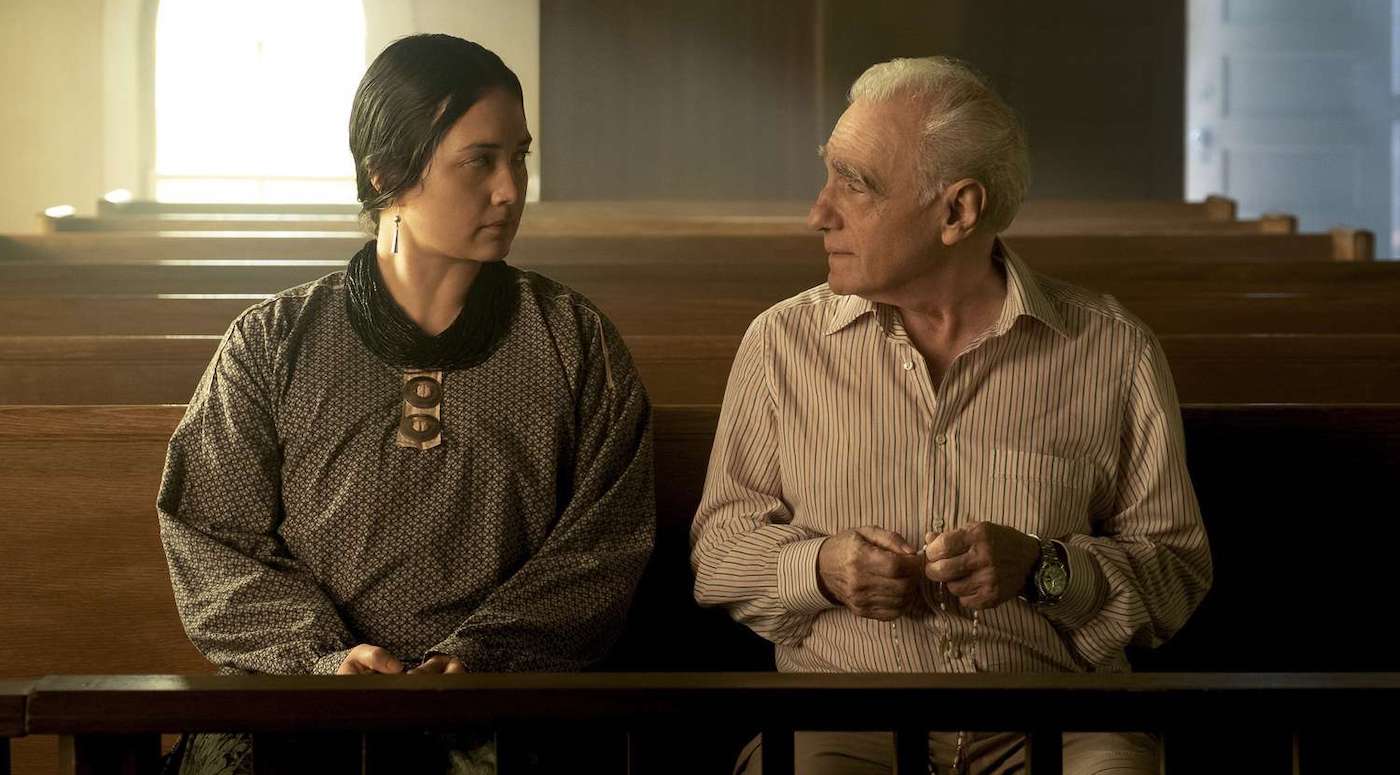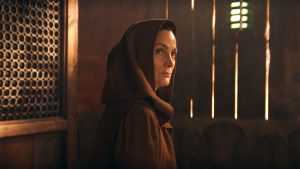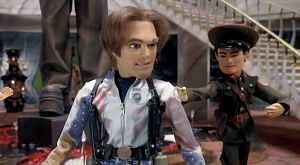
This article contains Killers of the Flower Moon spoilers.
Few filmmakers in the annals of cinema have earned the right to take a bow like Martin Scorsese. For nearly 60 years, the maverick storyteller has pushed the limits of his art form and found new ways to leave an indelible mark on the audiences who still show up. So for more than a handful of critics who clapped at my screening when the maestro materialized at the end of Killers of the Flower Moon, it must have seemed like a well-earned mic drop; a chance for Scorsese to take visible ownership of a passion project he’s been shepherding to the screen for the better part of a decade.
Yet my personal reaction to the moment was initial bafflement and a curious melancholy. Staring directly into the camera, the director of Raging Bull and Goodfellas, Taxi Driver and Gangs of New York, looked as if he were ready to weep when he said, “She was buried in the old cemetery in Gray Horse beside her father, her mother, her sisters, and her daughter. There was no mention of the murders.”
The “she” in question is, of course, Mollie Cobb (née Kyle), the full-blood Osage woman who saw her family systematically murdered by a conspiracy involving her own husband, Ernest Burkhart. That most intimate and sinister of betrayals is the centerpiece of Scorsese’s sprawling three and a half hour epic about America’s greatest sins: racism, greed, and the vile way both can be whitewashed, mythologized, and (for some) forgotten.
The framing of Scorsese’s ending cameo emphasizes this bitter fact. After spending more time with Ernest’s duplicity and gnawing guilt than it takes to watch the Titanic sink, the story stops as Mollie (played beautifully and brittlely by Lily Gladstone) decides to end her association with that wretched man. She walks away from Leonardo DiCaprio’s protagonist, and the film cuts to its final framing device that left more than a few folks puzzled: on a fictional radio show called True Crime Stories, a cast composed entirely of white men tidily wrap up any lingering questions and dangling plot threads:
Ernest spent 10 years of his life sentence in prison before being paroled and moving back to Osage County as a drifter and a failure sleeping on his (also guilty) brother’s couch; William K. Hale (Robert De Niro) served 20 years of his life sentence before continuing to torment the Osage by flaunting court orders that forbade him from returning to Osage County; and Mollie, poor Mollie, remarried but lived only another 10 years. She took the scars of what Ernest did to her to the grave.
It’s all concise and cleanly told, a veritable flesh and blood version of the screen captions that appear beneath freeze frames of Delta Tau Chi in Animal House. For some it is also a confounding choice. We do not see these real-life people’s fates dramatized by the actors we have been watching for so long. But that is Scorsese’s point, as well as his final, bitterest confession. The director and co-writer is aware of the imperfect limitations that arise from a white Italian-American telling an Osage story, and he pleads guilty while attempting to do his best to still honor a people thoroughly and totally betrayed by the institutions which leave men like Martin Scorsese with the microphone—shaping history how they see it and from their own ultimately narrow vantages.
The Killers of the Flower Moon movie has come under scrutiny in some quarters (including our own) for its choice to center the story of the “Osage Indian murders”—a veritable genocide carried out over at least five years (but likely longer) which left at least 60 Indigenous people murdered for their oil money—on the point-of-view of the murderers. While Gladstone walks away with the movie as its soul, Mollie is ultimately secondary to the machinations of Ernest and his manipulative uncle, “King” Hale.
Christopher Cote, an Osage language expert who worked on Killers, was not wrong when during one of the movie’s premieres he said, “As an Osage, I really wanted this to be from the perspective of Mollie and what her family experienced, but I think it would take an Osage to do that. Martin Scorsese, [while] not being Osage, I think did a great job representing our people, but this history is being told almost from the perspective of Ernest Burkhart.”
Scorsese, indeed, told the film from a white perspective, even if his film has the good grace to recognize the white perspective is the source of profound evil here. Which brings us back to the final scene of Killers of the Flower Moon. The beauty and horror of David Grann’s nonfiction book that the film is based on is it excavates events which white mainstream American culture has either buried or reframed as a tale of victory and pride for the FBI. The radio show Scorsese appears on in the film is fictional, but what it represented was not.
The prosecution and conviction of Hale was a feather in the cap for J. Edgar Hoover and his fledgling bureau, one that was crowed about on the very real propagandistic radio show, This Is Your FBI (1945-1953), and in films like The FBI Story where a fictionalized version of Tom White (Jesse Plemons’ character) is portrayed with aw shucks grit by Jimmy Stewart. Notably, Hoover refused to let the real-life White be consulted for that film.
Similarly, when Scorsese first began developing Killers of the Flower Moon, DiCaprio was pegged to initially play White until the actor realized this was turning into a white savior narrative exactly like the kind Stewart and Hoover told 70 years ago. Nevertheless, the star and director lost their original studio when they insisted the movie should be about Mollie and Ernest, not the crusading white lawman.
Despite this commendable self-awareness, their finished film cannot quite get out of the way of telling its yarn through a prism Scorsese is intimately familiar with: bad men doing bad things. Scorsese recognizes Mollie is the heart of his picture, and even acknowledges that with his onscreen cameo. Scorsese’s words as an on-air radio personality are those of a man who cannot do justice to such an incomprehensibly devastating series of events, still even his heart breaks for that Osage woman’s sad eyes.
So the radio story we see performed is told like most other stories repurposed in American culture: it’s been recycled, reconfigured, and reworked until all that’s left is a simplistic, if reassuring, tale of good versus evil. Of (white) order being restored. The radio show—which like so many modern podcasts is sold around “true crime” as opposed to true lives—cannot even afford a Native American actor to portray the Osage point-of-view; one of the white actors puts words in their mouths. The pain and horror of American history has been commodified into white American entertainment, indistinguishable from new award-winning content showing up on your Apple TV+ account.
Fortunately, Scorsese’s cameo is not the actual final image of the film. The last thing we see is not Ernest or Hale, nor even a director aware of the limitations of his artistry and perhaps art itself. It is of today’s living and breathing Osage people—a community that defied Hale and the other white conspirators, and who survived the 1920s’ Reign of Terror. Filmed while performing a tribal dance, the community achieves a grace impossible for words, or moving narrative images, to do proper justice. Killers of the Flower Moon is an imperfect tribute to that real legacy which endures after all the horrors are reckoned with… but never truly forgotten.
Killers of the Flower Moon is streaming on Apple TV+ now.
The post The Grim Meaning of That Killers of the Flower Moon Ending Cameo appeared first on Den of Geek.




